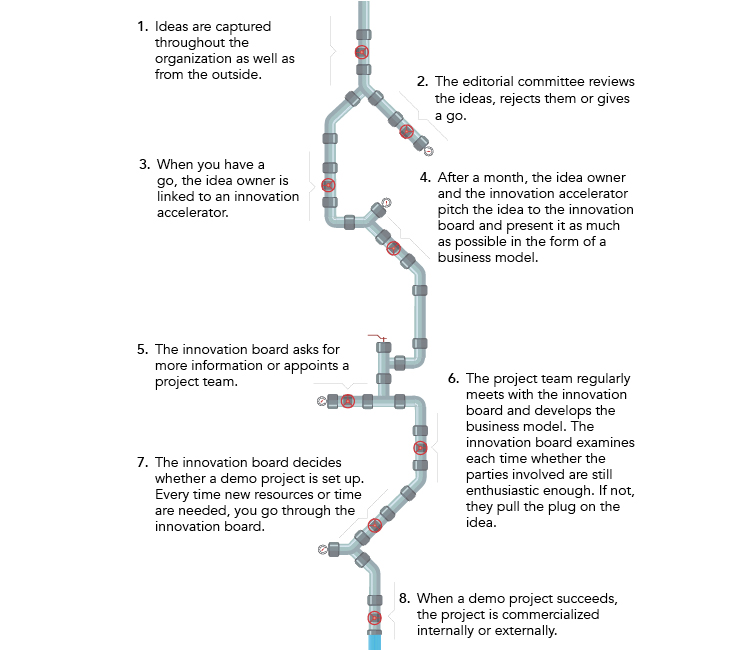Appeared in De Standaard in Dutch on Wednesday June 12, 2019.
As in many companies, until recently R&D at Aquafin had been a separate and somewhat isolated department, composed of scientists focused on the core business: water purification. When in 1993 the company broadened its mission to ‘creating a clean living environment in harmony with water’, clean waterways continued to be the basis, but there was an added focus on sustainable use of water, climate change, circular economy, scarcity of natural resources, etc.
Danny Baeten, Directeur Business Development & Innovation at Aquafin:
’When you think in business models, you will obtain usable concepts more easily.'
'With such challenges, you have to broaden your R&D and ensure that the developments lead to new products and services’, says Danny Baeten, Director Business Development and Innovation at Aquafin. ‘That does not mean everyone must be innovative, but we need to create a culture where innovation gets maximum opportunity and leads to business. We are not into fundamental research: innovation should create value. To realize that, Aquafin reached out to Antwerp Management School.’





